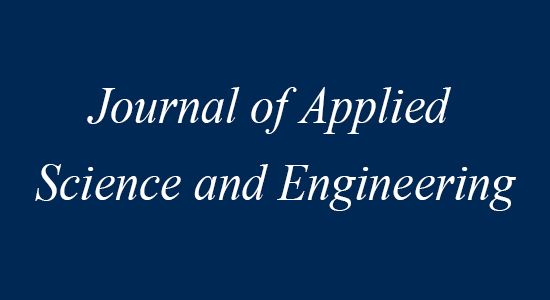REFERENCES
- [1] Aridor, Y. and Lange, D. B. “Agent Design Patterns: Elements of Agent Application Design,” In K. P. Sycara and M. Wooldridge, editors, Proceedings of the Second International Conference on Autonomous Agents (Agents’98), pages 108–115, New York, May 9–13. ACM Press(1998).
- [2] Booch, G., Rumbaugh, J., and Jacobson, I., The Unified Modeling Language User Guide. Addison-Wesley, Reading, Massachusetts, (1998).
- [3] Cardelli, L., “A Language with Distributed Scope,”Computing Systems, 8(1): 27–59, (1995).
- [4] Chang, S. K., “Towards A Theory of Active Index,” Journal of Visual languages and Computing, 6(1): 101–118, (1995).
- [5] Chang, S. K., “Active Index for Content-Based Medical Image Retrieval,” Journal of Computerized Medical Imaging and Graphics, 20(4): 219–229, (1996).
- [6] Chang, S. K. and Znati, T., “Adlet: An Active Document Abstraction for Multimedia Information Fusion,” IEEE Trans-actions on Knowledge and Data Engineering. To appear (2000).
- [7] Chen, P. W., Kawata, Y., Gharib, H. I., and Chang, S. K.,” An Approach for the Design and Simulation of Information Retrieval Protocols,” In Proceedings of the 2000 ICDCS Workshops, pages E126–E133, Taipei, Taiwan, Apr.. IEEE Computer Society Press. Presented at the Workshop on Distributed System Validation and Verification (DSVV 2K)( 2000).
- [8] Falchuk, B. and Karmouch, A., “Visual modeling for agent-based applications,” Computer, 31(12): 31–38, Dec. (1998).
- [9] Gamma, E., Helm, R., Johnson, R., and Vlissides, J., Design Patterns: Elements of Reusable Object-Oriented Software, Addison-Wesley, Reading, Massachusetts, (1995).
- [10] Gelernter, D. and Carriero, N.,”Coordination Languages and their Significance,” Communications of the ACM, 35(2): 97– 107, Feb. (1992).
- [11] Gharib, H. I., Chen, P. W., and Chang, S. K., “Naming Service in the Distributed Object Environment for Adlets (ADDNS),” In Proceedings of the 4th International Workshop on Object-oriented Real-time Dependable Systems (WORDS’99). IEEE Computer Society Press, Jan. (1999).
- [12] Gharib, H. I., Chen, P. W., Kawata, Y., and Chang, S. K., “Adlets Migration and Handling in a Distributed Object Environ-ment,” In Proceedings of the Third IEEE International Symposium on Object-oriented Real-time distributed Computing (ISORC ’2K), pages 260–268, Newport Beach, California, Mar. (2000).
- [13] Harel, D., Statecharts:” A Visual Formalism for Complex Systems,” Science of Computer Programming, 1987(8): 231–274, (1987).
- [14] Harrison, C. G., Chess, D. M., and Kershenbaum, A., “Mobile Agents: Are they a Good Ides?”Technical report, IBM T. J. Watson Research Center, York town Heights, N.Y., (1995).
- [15] Hopcroft, J. E. and Ullman, J. D., Introduction to Automata Theory, Languages, and Computation, Addison-Wesley, Reading, Massachusetts, (1979).
- [16] Korfhage, R. R., Information Storage and Retrieval, John Wiley & Sons, New York, July (1997).
- [17] Lentini, R. P., Rao, G. P., and Thies, J. N., “Agent Itineraries,” Dr. Dobb’s Journal of Software Tools, 24(5): 60–70, May(1999).
- [18] Loke, S. W., Schmidt, H., and Zaslavsky, A., “Programming the Mobility Behaviour of Agents by Composing Itineraries,” In Proceedings of the Fifth Asian Computing Science Conference (ACSC’99), Dec. (1999).
- [19] Malone, T. W. and Crowston, K., “The Interdisciplinary Study of Coordination,” ACM Computing Surveys, 26(1): 87–119, Mar. (1994).
- [20] Mitsubishi Electric Information Technology Center America (ITA). http://www.meitca.com/HSL/Projects/Concordia/.
- [21] ObjectSpace Inc. http://www.objectspace.com/voyager/prodVoyage r.asp.
- [22] Rumbaugh J., Jacobson I., and Booch G., The Unified Modeling Language Reference Manual, Addison-Wesley, Reading, Massachusetts, (1998).
- [23] Serugendo G. D. M., Muhugusa M., and Tschudin C. F., “A Survey of Theories for Mobile Agents,” WWW Journal, pages 139–153. Special Issue on Distributed WWW Processing: Applications and Techniques of Web Agents(1998).
- [24] Tahara Y., Ohsuga A., and Honiden S., “Agent System Development Method Based on Agent Patterns,” In Proceedings of the 21st International Conference on Software Engineering, pages 356–367. IEEE Computer Society Press / ACM Press, May (1999).
- [25] Tokyo Research Laboratory IBM Corporation. http://www.trl.ibm.co.jp/aglets/.
- [26] Tolksdorf R., “Coordination Patterns of Mobile Information Agents,” In Cooperative Information Agents II, volume 1435 of Lecture Notes in Computer Science, pages 246–261. Springer-Verlag, Berlin. Available at http://www.cs.tu-berlin.de/tolk/papers/cia98.ps.gz (1998).
- [27] Toshiba Corporation. http://www2.toshiba.co.jp/plangent/index.htm.
- [28] Tschudin C. F., “On the Structuring of Computer Communication,” PhD thesis, University of Geneva, Geneva, Switzer-land, (1993).
















